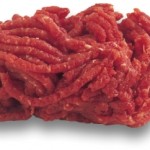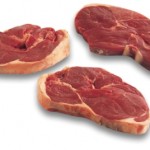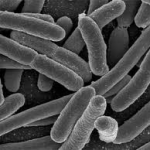The meat industry, from food technologists to promoters, now has a credible technical resource for nutritional data on beef and lamb, thanks to a bank of recently completed assessments by Beef + Lamb NZ (B+LNZ) Inc, writes nutrition manager Fiona Carruthers.
Being able to provide nutritional information is becoming increasingly important. In the United States, for example, there is now a requirement that nutritional information must be shown on package labels for certain whole cuts of meat, such as steak, or displayed on charts at the store. Previously, this information was required only for processed foods or for meat products with added ingredients such as marinades or stuffing.
B+LNZ has recently undertaken a project to assess the nutritional attributes of over 50 cuts of beef and lamb. It is the largest analysis ever done on New Zealand’s red meat. Updating and expanding the nutrition composition database strengthens the platform on which all activities and communications are based. Sound science is an integral part of B+LNZ’s nutrition portfolio and this new analysis provides a credible technical resource accessible to everyone inside and outside the industry.
In this issue, details of the sampling and methodology used in the project are explained, as well as some top line results.
Sampling
Several criteria relating to sampling and methodology had to be fulfilled in order for the new data to be eligible for inclusion in databases globally.
Samples of beef and sheep meat for analysis were derived from meat processors across the country over a six month period. The need to obtain a representative number of samples from each region was deemed unnecessary as regional variation was thought to be minimal given New Zealand’s small geographical area. The same was true for the potential influence of breed or feed on composition; it was requested all samples came from New Zealand cattle and sheep raised and finished on pasture. All of the sheep meat analysed was ‘lamb’, that is under 12 months of age without any permanent incisor teeth ‘in wear’. An ‘average’ lamb carcase was determined by selecting from carcase grades in proportion to the national slaughter statistics. Beef samples came from P2 steer carcases – those classified as having light to medium fat cover with good muscle development – weighing between 270-320kg.
Lean and fat samples were analysed separately, giving the ability to provide compositional data for cuts with varying degrees of fat trim, or fully lean, as appropriate. The need for this flexibility is underlined by evidence showing many consumers trim fat after purchasing meat, either before or after cooking.
Methodology
For each of the 23 beef and 25 lamb cuts analysed, an average of 10 samples was collected to give a total combined sample of 3kg lean tissue for both cooked and uncooked product. Sample tissue was prepared by separating bone, fat and lean muscle by boning knife. Analysis was carried out on both raw and cooked samples, using appropriate cooking methods advised by B+LNZ’s food specialist. The diagram below summarises the procedure followed up to the stage of freeze-drying.
Widely-accepted laboratory procedures were used, in line with the requirements of international nutrient databases. A total of 25 nutrients, including proximate analysis, and 40 fatty acids were analysed in the lean and fat samples. Additional data in this new data set includes figures for long chain polyunsaturated fatty acids and vitamin D. Full amino-acid profiles were determined for four uncooked, lean cuts of both beef and lamb.
Results
Fat
The new data shows New Zealand beef and lamb continue to be low fat protein options for consumers, particularly when eaten trimmed of visible fat. Many cuts remain eligible for the Heart Foundation ‘Tick’.
- Average total fat content across all lean cuts (uncooked) = 4.66g/100g for beef, 4.65g/100g for lamb
- Average saturated fat content across all lean cuts (uncooked) = 2.17g/100g for beef, 2.45g/100g for lamb
- Average cholesterol content across all lean cuts (uncooked) = 43.5mg/100g for beef, 63.5mg/100g for lamb
Omega 3s
Oily fish and other seafood are undoubtedly the richest sources of omega 3s. Lean red meat provides smaller amounts but contribution to the diet may be significant when relative amounts eaten are considered.
- Average long chain omega 3s across all lean cuts (uncooked) = 41mg/100g for beef, 48mg/100g for lamb.
Vitamin D
Vitamin D is gaining an increasing amount of scientific ‘air-time’, both due to its importance in the diet and increasing levels of insufficiency seen in the New Zealand population and other developed countries. Meat has been viewed historically as a poor source of vitamin D, but 25-OH vitamin D3 is now being recognised as a more ‘potent’ form, with a potency factor of 1.5 – 5 suggested by researchers working in this area. Initial analysis of the vitamin D data shows 100g of beef or lamb can provide about 10% of the daily vitamin D requirement (NZ/Aus = 5μg).
Nutrient claims
Data suggests eligibility for a range of nutrient claims, for example ,g iron, zinc, protein and vitamin B12, according to the trans Tasman Food Standards Code, both as a ‘source’ (≥10% RDI) and ‘good source’ (≥25% RDI), as well as being low in sodium.
This new data confirms lean New Zealand beef and lamb can be promoted on its nutritional attributes. As a nutrient-dense food, a small serving of lean red meat gives large amounts of important nutrients for good health.
Further information is available from Fiona Carruthers, nutrition manager, B+LNZ. Email: [email protected].
Published in Food NZ (June/July 2012).







